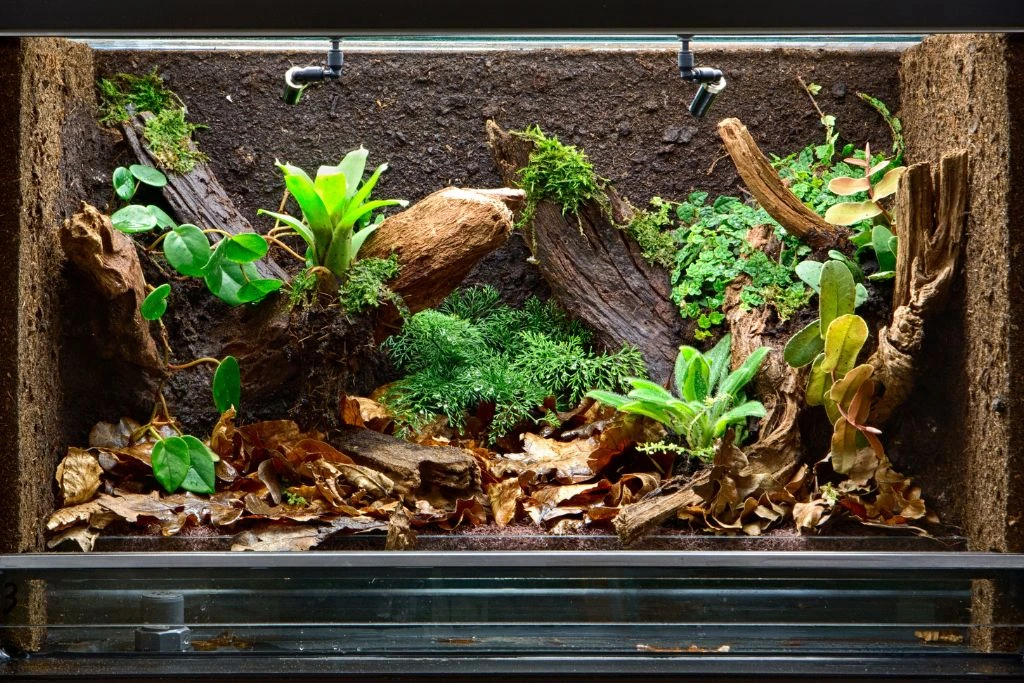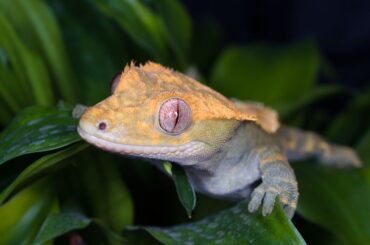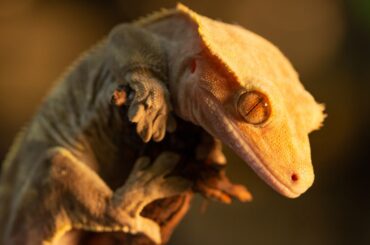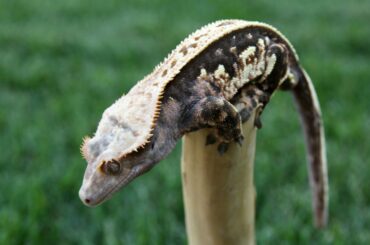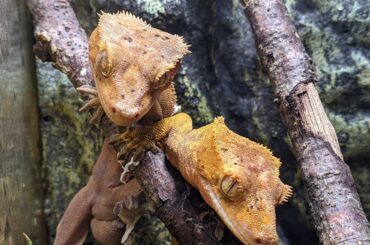The ideal environment for a leopard gecko best replicates its natural environment, which includes vast spaces, incredible terrain, and optimal conditions. This article will provide valuable insights you can use to customize your leopard gecko’s tank.
What Are the Things Needed To Set Up the Tank?
While most people have the impression that leopard geckos live in arid, sandy deserts, it isn’t entirely true. While they live near desert areas, their natural environment is also rocky and grassy.
Thus, the ideal habitat is a leopard gecko tank setup that mimics their natural environment – not too dry, not too sandy, with crooks and crannies for them to explore.
Enclosure
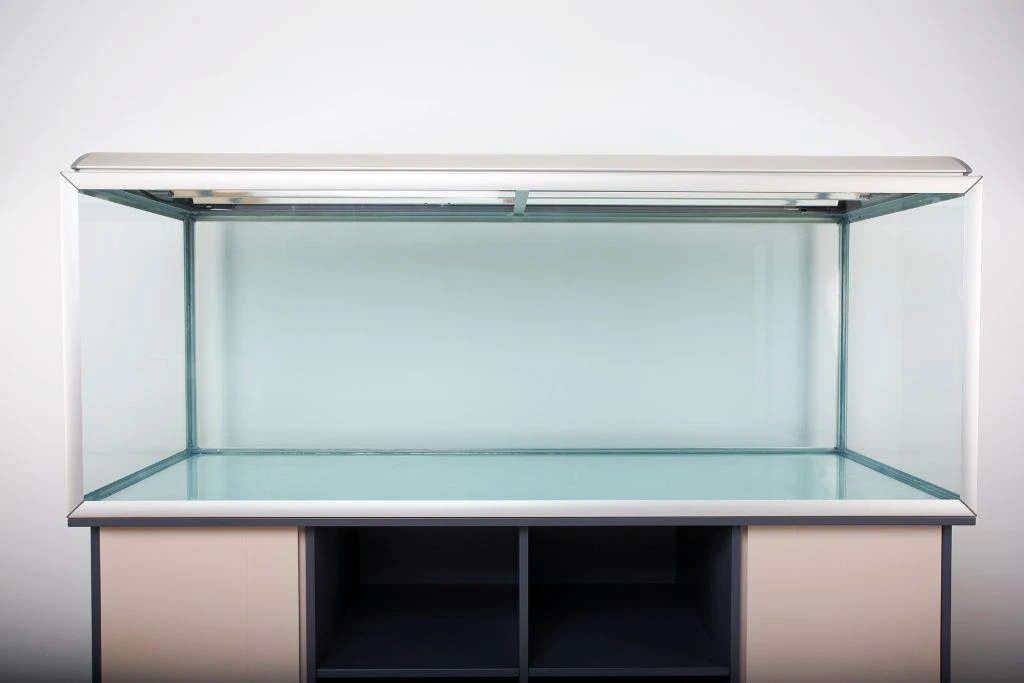
A reptile tank may also be known as an enclosure. There are two types based on access: top opening and side opening. Those with a side opening allow owners to build bonds with their pets more easily. That’s because, in the wild, predators usually sneak on them from the top, so reaching out to them from a top opening may trigger instincts. However, side openings make it easier for your gecko to escape, so consider that.
You can choose either glass, plastic, or a wood type of enclosure. Glass is best because it’s transparent, chemically stable, and easy to clean; however, it’s fragile, hard to set up and transport, and relatively expensive. The second-best choice would be plastic – similar to glass – but make sure to buy from credible sellers so the material is safe for your gecko. The last choice would be wood because it’s too porous, thus prone to rot, damage, and harmful mold.
How Many Gallons Does a Leopard Gecko Need?
When choosing an enclosure, you should also determine what capacity you need. Tank capacities are usually in gallons, and it’s recommended for leopard geckos to be kept in 20-gallon tanks. Larger is always better, especially if the enclosure will have many inhabitants.
Can a Baby Leopard Gecko Live in a 20 Gallon Tank?
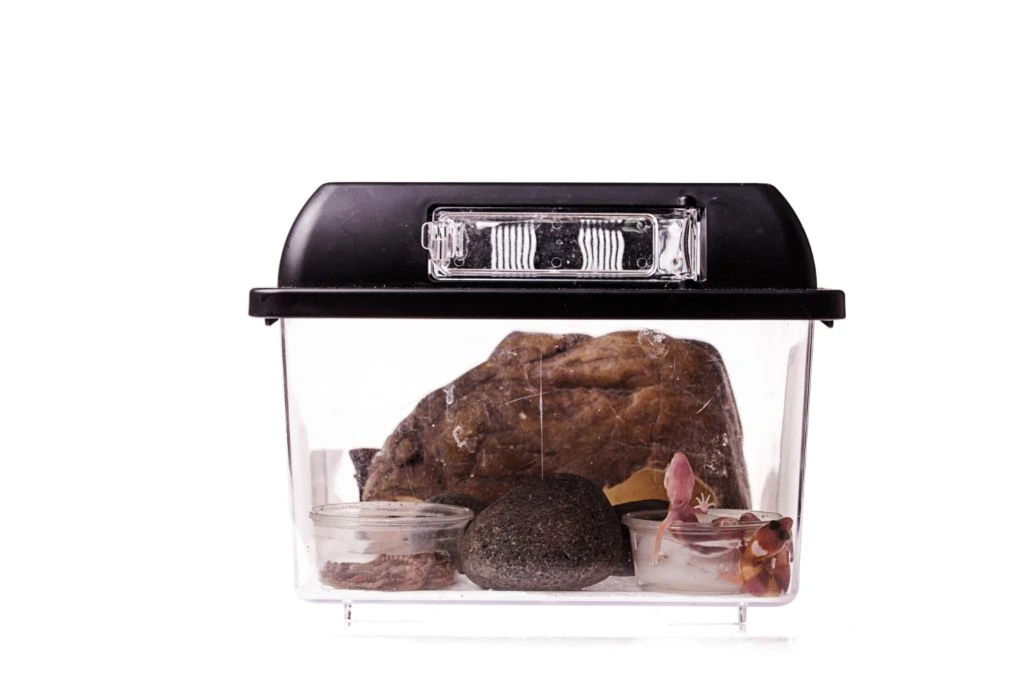
If you have a baby leopard gecko, it can also live in a 20-gallon tank. If you can’t find an enclosure that big, then a 10-gallon tank would suffice, but you need to find a larger one immediately. Geckos grow fast, and your baby gecko will quickly outgrow the first enclosure.
What Reptiles Can Live in a 20 Gallon Tank?
Small snakes and lizards, including the leopard gecko, are reptiles that can live in a 20-gallon tank. However, it is not recommended to house your leopard gecko with other animals, including other leopard geckos. Conflict may arise due to limited space and food competition, so it’s best to keep them apart or set a maximum of 2 to 3 geckos per tank.
Humidity and Water
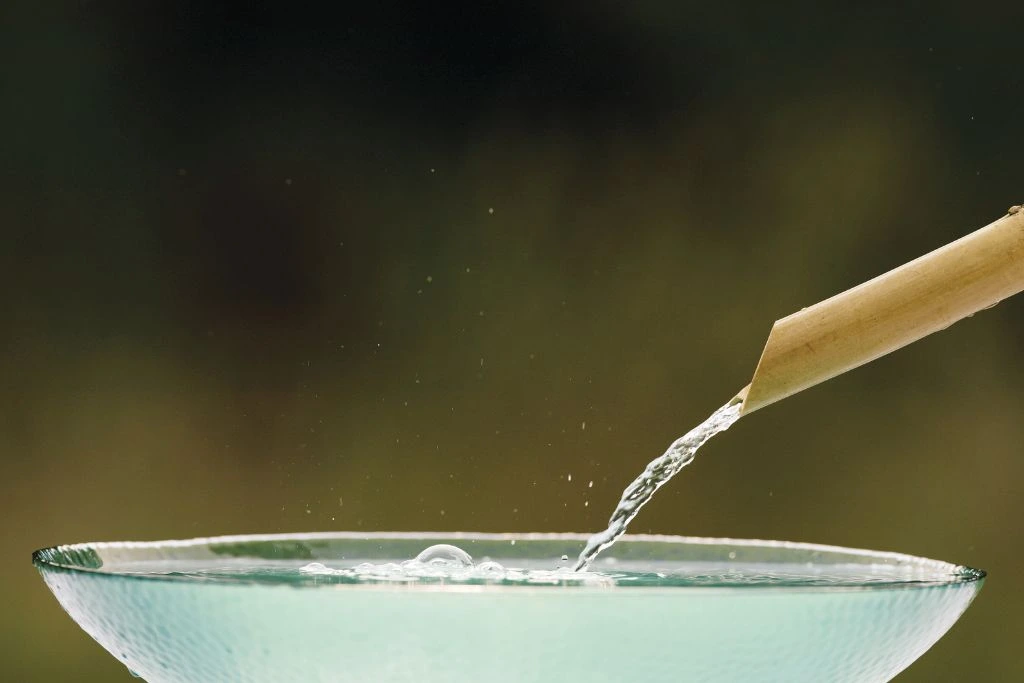
Leopard geckos should not be kept in extremely dry tanks because it can affect how they shed and lead to other problems, like respiratory and skin issues. Instead, a humidity level of 30% to 40% should be maintained.
The best way to maintain humidity levels is to provide a water dish. It will quench your gecko’s thirst, it can soak in it, and the water helps improve the enclosure’s overall humidity. Ensure the container is big enough for the gecko but not deep enough for them to drown. Regularly replace the water so it’s fresh.
Temperature and Lighting
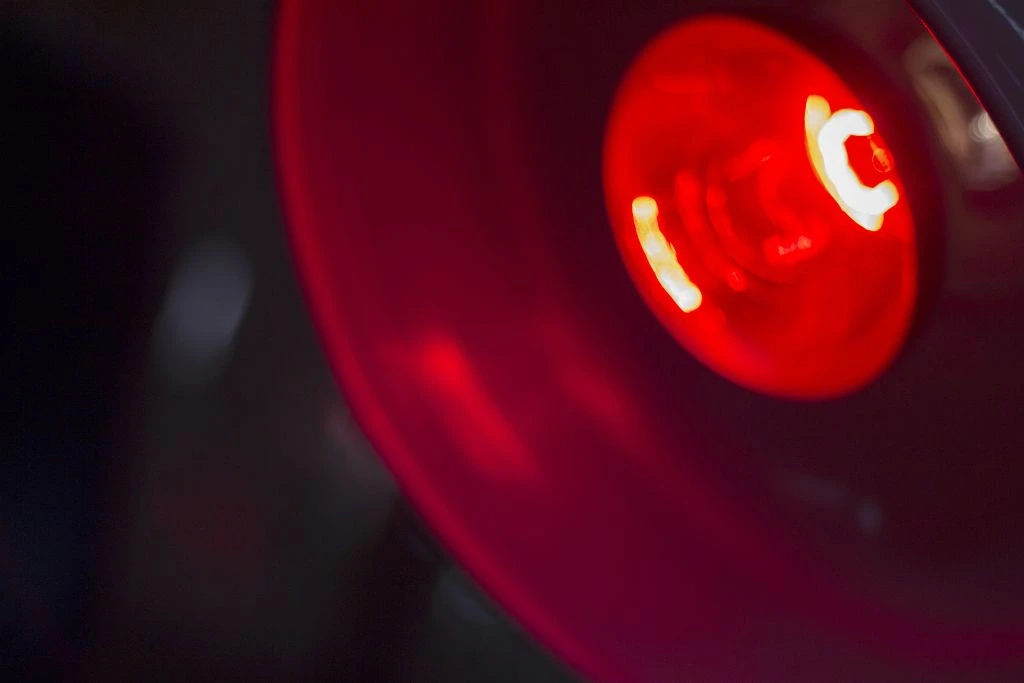
A temperature gradient is essential for leopard geckos because they rely on their external environment to maintain their internal temperatures. Designate opposite sides of the enclosure as either warm (90°F or 32°C) or cold (80°F or 27°C). You’ll also need a thermometer and heating materials. Your options for the latter include:
- Heating lamp
- Heat mat
- Ceramic heaters
Because they aren’t daytime creatures, some say that lighting isn’t crucial for leopard geckos. But you’ll find them beneficial because they help regulate circadian rhythms or body clocks. You can use red lights, heating lamps, or UVB lights to provide routine lighting.
Substrate
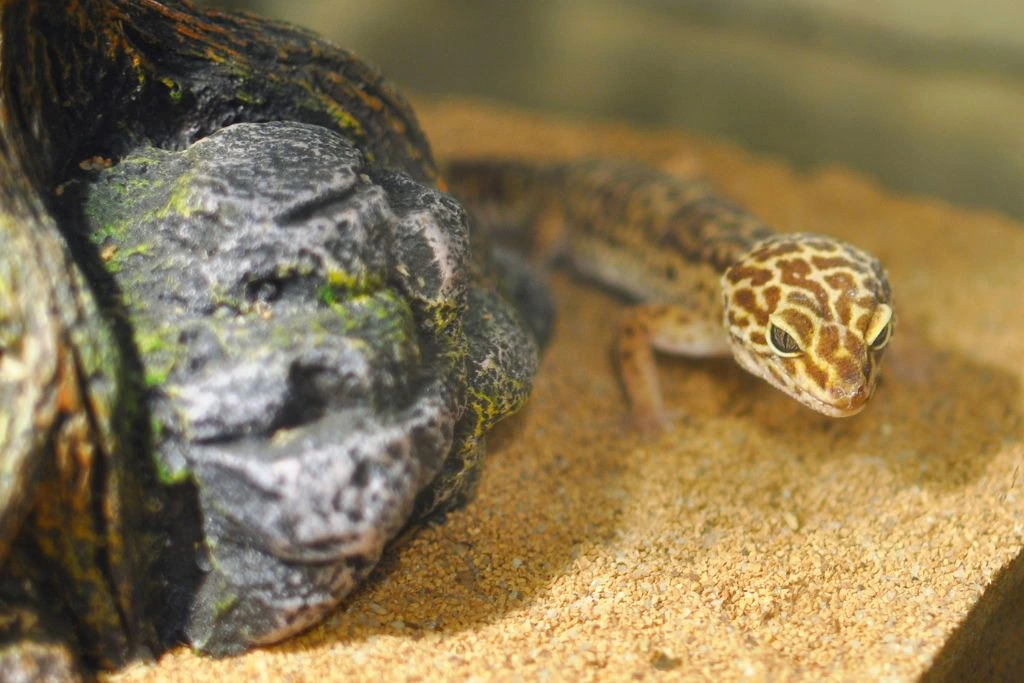
Your choice of substrate is important because your leopard gecko will tread on it and interact with it daily. Avoid ones that are too abrasive, rough, or sharp – you wouldn’t want to injure your pet. Moreover, do not choose substrates that emit harmful substances, like chemicals or VOCs, or consist of too large particles that may cause choking or impaction for your gecko.
Instead, you may choose from these:
- Excavator or hardening clay
- Stone or pebbles (not too smooth or too rough)
- Paper
- Reptile carpet
- Ceramic tiles
- Sand mats
- Slate tile
Many sites don’t recommend sand as a substrate because of fear of impaction. However, some advocate for it because it’s the best way to mimic the leopard gecko’s natural environment. If you use sand as substrate, choose safe products for your gecko and monitor them closely if they decide to eat the sand.
Plants, Accessories, and Decoration
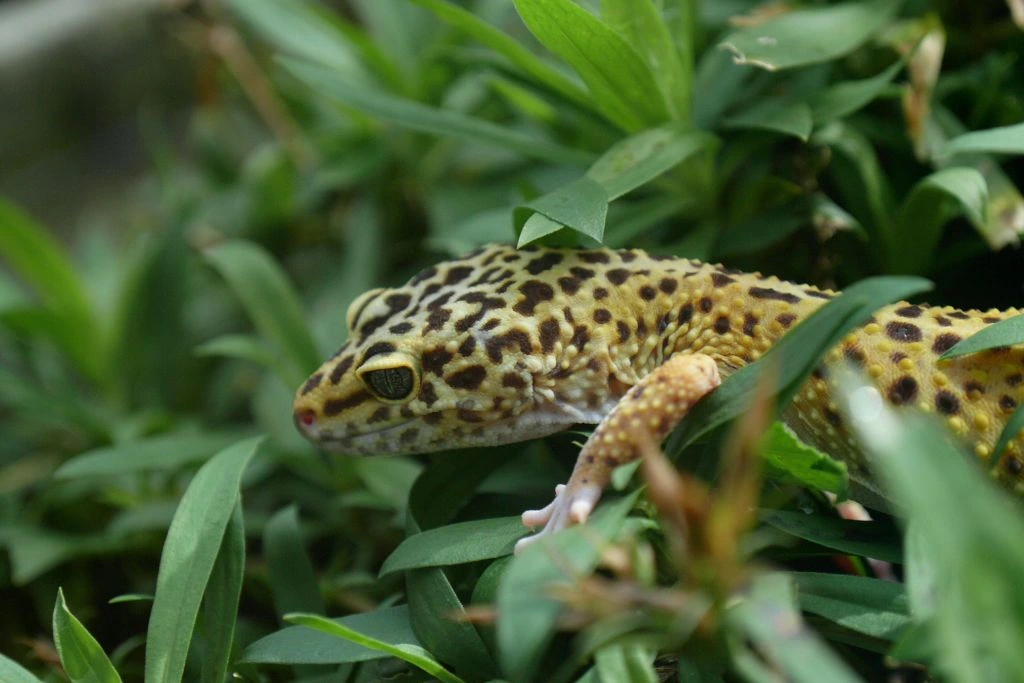
Plants, decors, and accessories transform a simple tank into a full leopard gecko terrarium setup. They are both aesthetic and practical, especially when these are the ones you add to the enclosure:
- Rocks: You can use them to form terrain across their enclosure, which they can explore and maybe even hide in.
- Wood: Although not high climbers, leopard geckos also like scurrying across bogs and logs, so provide them with some, but don’t make them too high up.
- Plastic box: Plastic containers are also suitable if you don’t want to buy a reptile cave or other ready-made hideouts. Place one on either side of the enclosure.
- Artificial plants: Plants aren’t necessary for leopard geckos, so it’s best to get fake ones instead. They’re low-maintenance and unlikely to transmit pests that could harm your gecko.
Step-by-Step Guide on Setting up a 20-Gallon Tank for the Habitat of Leopard Gecko
Here’s how you can set up your leopard gecko’s 20-gallon tank or enclosure:
- Choose your leopard gecko’s tank: Decide on the capacity and dimensions, type of material, and whether you’ll have it custom-made, DIY, or buy an available, similar tank. Use the information provided above to make the best decision.
- Install the tank: Once you have your tank, set it up somewhere secure so that it’s unlikely to get bumped or damaged.
- Install lighting and heating materials: Set the heating materials near the warm side.
- Fill the tank with substrate: Make sure the tank floor is well-covered with your chosen, safe substrate.
- Place hideouts, decors, and other accessories: Arrange decors and accessories the way you want them. Ensure there are hideouts on either side of the tank so your leopard gecko has spaces to retreat to when they feel hot or cold.
- Place food and water bowls: Food bowls are used when feeding worms to your leopard geckos. Water bowls are essential for both humidity and quenching thirst.
Conclusion
A 20-gallon leopard gecko tank or enclosure is highly recommended, but you can also opt for larger capacities so your lizard has a larger space to explore. You can then transform the bare tank into their ideal living space by picking the best tank material, providing optimal humidity, choosing the best substrate, and installing useful accessories.

